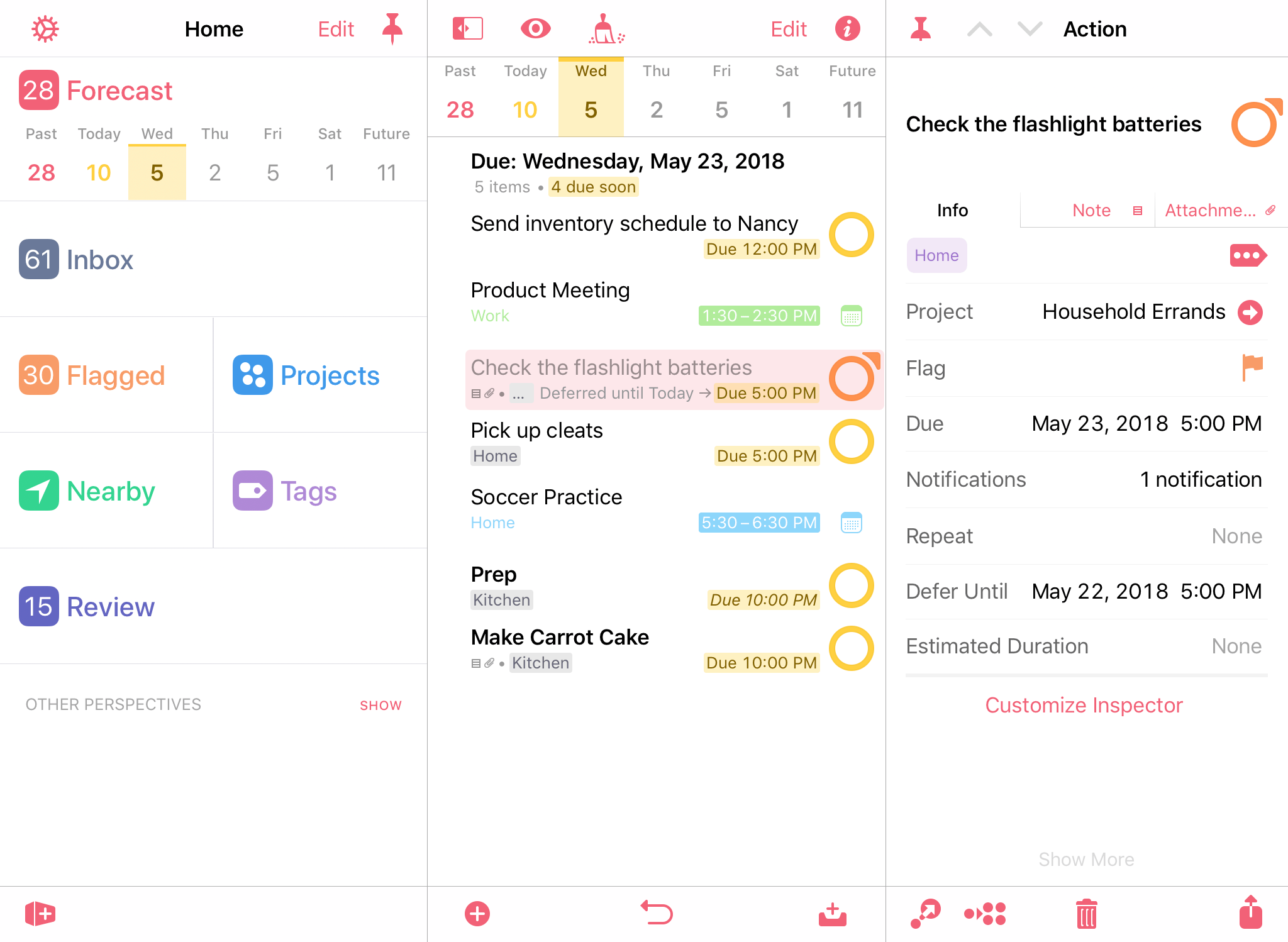

In recent times, I’ve switched my default setting for projects and action groups to not autocomplete and instead:

However, I’ve found it’s often more powerful to get back to GTD basics and focus on the next step, or the next few steps. I have a natural tendency to want to map out projects in their entirety. I’m not going to pretend that I don’t get some satisfaction from the simple act of checking items off that list. In that same post, Jeff refers to the dopamine hit of checking off an activity.

If I put something in OmniFocus in the right place in the right way, I will almost certainly make myself do it. That includes setting in motion a day of checking OmniFocus on a regular basis.” I don’t think I can do a better job than that of describing exactly how powerful I think OmniFocus can be in building a habit stack. Over on the OmniFocus forums, Jeff Hester wrote “A single keystone habit – in this case open up OmniFocus first thing in the morning – could be used to bootstrap a great deal more.Sometimes remembering to wash your hair is an accomplishment, and that’s okay! I’ve found it beneficial both to have a reminder to do these obvious things that I know keep my body, brain, house and life ticking along happily and also to be able to look back at the end of the day and know that if I have done all of these things, even if I achieved nothing else.
 On days when life is difficult-maybe I’m sick, maybe my son is sick, or maybe I just had a baby and am now living the madness that is life with a newborn (none of these are hypothetical examples…)-the ‘obvious’ things can be less obvious. I always know where to look, and I always know what I need to do next. …the more mundane the level you’re trying to organize, the more complex your system must be to manage it well.īut for me, the benefits of keeping everything from ‘drink a glass of water’ to ‘complete XYZ really big project’ in OmniFocus are: David Allen writes in ‘Making It All Work’: Some prefer to keep the minutiae of their lives outside of OmniFocus, and that’s fine too! I understand this perspective it certainly adds simplicity. But, in general: small, incremental changes are the way to go. Sometimes, a significant shift in life circumstances precipitates a big shift in the structure of OmniFocus, and that’s okay. My workflow is specific to me and has been gradually honed and refined over the eight or so years that I’ve been using OmniFocus.Īlthough I’ve certainly had a few overhauls of the whole database during that time, I try to resist the temptation to do this unless it’s really necessary. That’s fine! And the reality is, if you tried to implement a system identical to mine overnight, it almost certainly would not work for you. This system might appear overly complex or overly engineered to some. using the ‘focus’ feature and tags to switch between contextsįor the last post in this series, I’d like to zoom out and consider some of the overarching principles I try to keep in mind as I iterate on my OmniFocus set-up. some automation magic that helps with window management and navigation. So, over this week, I’m concentrating on the more foundational, structural side of things, like projects, tags, and perspectives. That session will focus on the magic of Omni Automation (✨!). In the lead-up to my Learn OmniFocus workflow session, I wanted to share some of the nitty-gritty details of how I manage my tasks with OmniFocus.
On days when life is difficult-maybe I’m sick, maybe my son is sick, or maybe I just had a baby and am now living the madness that is life with a newborn (none of these are hypothetical examples…)-the ‘obvious’ things can be less obvious. I always know where to look, and I always know what I need to do next. …the more mundane the level you’re trying to organize, the more complex your system must be to manage it well.īut for me, the benefits of keeping everything from ‘drink a glass of water’ to ‘complete XYZ really big project’ in OmniFocus are: David Allen writes in ‘Making It All Work’: Some prefer to keep the minutiae of their lives outside of OmniFocus, and that’s fine too! I understand this perspective it certainly adds simplicity. But, in general: small, incremental changes are the way to go. Sometimes, a significant shift in life circumstances precipitates a big shift in the structure of OmniFocus, and that’s okay. My workflow is specific to me and has been gradually honed and refined over the eight or so years that I’ve been using OmniFocus.Īlthough I’ve certainly had a few overhauls of the whole database during that time, I try to resist the temptation to do this unless it’s really necessary. That’s fine! And the reality is, if you tried to implement a system identical to mine overnight, it almost certainly would not work for you. This system might appear overly complex or overly engineered to some. using the ‘focus’ feature and tags to switch between contextsįor the last post in this series, I’d like to zoom out and consider some of the overarching principles I try to keep in mind as I iterate on my OmniFocus set-up. some automation magic that helps with window management and navigation. So, over this week, I’m concentrating on the more foundational, structural side of things, like projects, tags, and perspectives. That session will focus on the magic of Omni Automation (✨!). In the lead-up to my Learn OmniFocus workflow session, I wanted to share some of the nitty-gritty details of how I manage my tasks with OmniFocus.








 0 kommentar(er)
0 kommentar(er)
